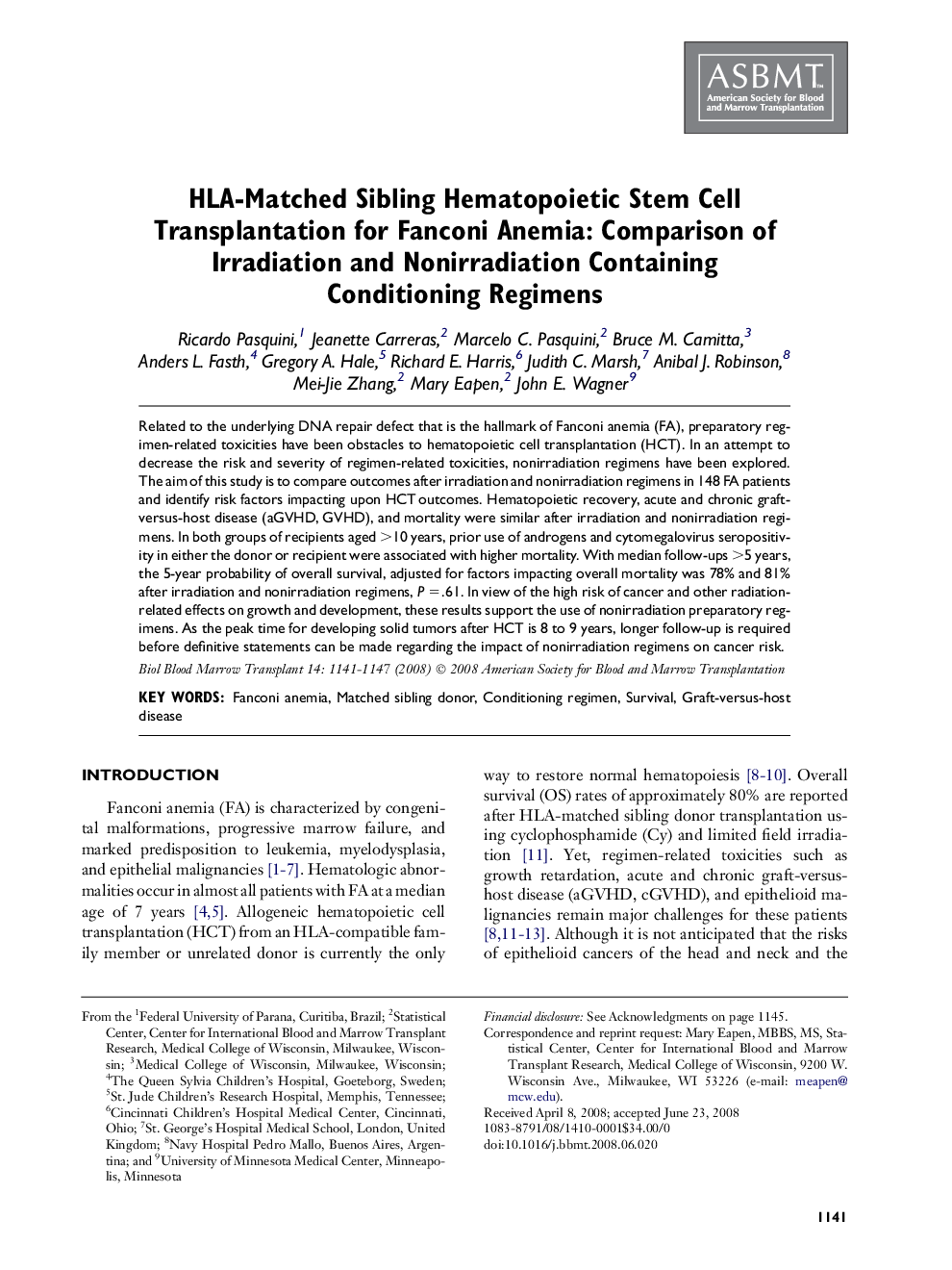| Article ID | Journal | Published Year | Pages | File Type |
|---|---|---|---|---|
| 2103688 | Biology of Blood and Marrow Transplantation | 2008 | 7 Pages |
Related to the underlying DNA repair defect that is the hallmark of Fanconi anemia (FA), preparatory regimen-related toxicities have been obstacles to hematopoietic cell transplantation (HCT). In an attempt to decrease the risk and severity of regimen-related toxicities, nonirradiation regimens have been explored. The aim of this study is to compare outcomes after irradiation and nonirradiation regimens in 148 FA patients and identify risk factors impacting upon HCT outcomes. Hematopoietic recovery, acute and chronic graft-versus-host disease (aGVHD, GVHD), and mortality were similar after irradiation and nonirradiation regimens. In both groups of recipients aged >10 years, prior use of androgens and cytomegalovirus seropositivity in either the donor or recipient were associated with higher mortality. With median follow-ups >5 years, the 5-year probability of overall survival, adjusted for factors impacting overall mortality was 78% and 81% after irradiation and nonirradiation regimens, P = .61. In view of the high risk of cancer and other radiation-related effects on growth and development, these results support the use of nonirradiation preparatory regimens. As the peak time for developing solid tumors after HCT is 8 to 9 years, longer follow-up is required before definitive statements can be made regarding the impact of nonirradiation regimens on cancer risk.
